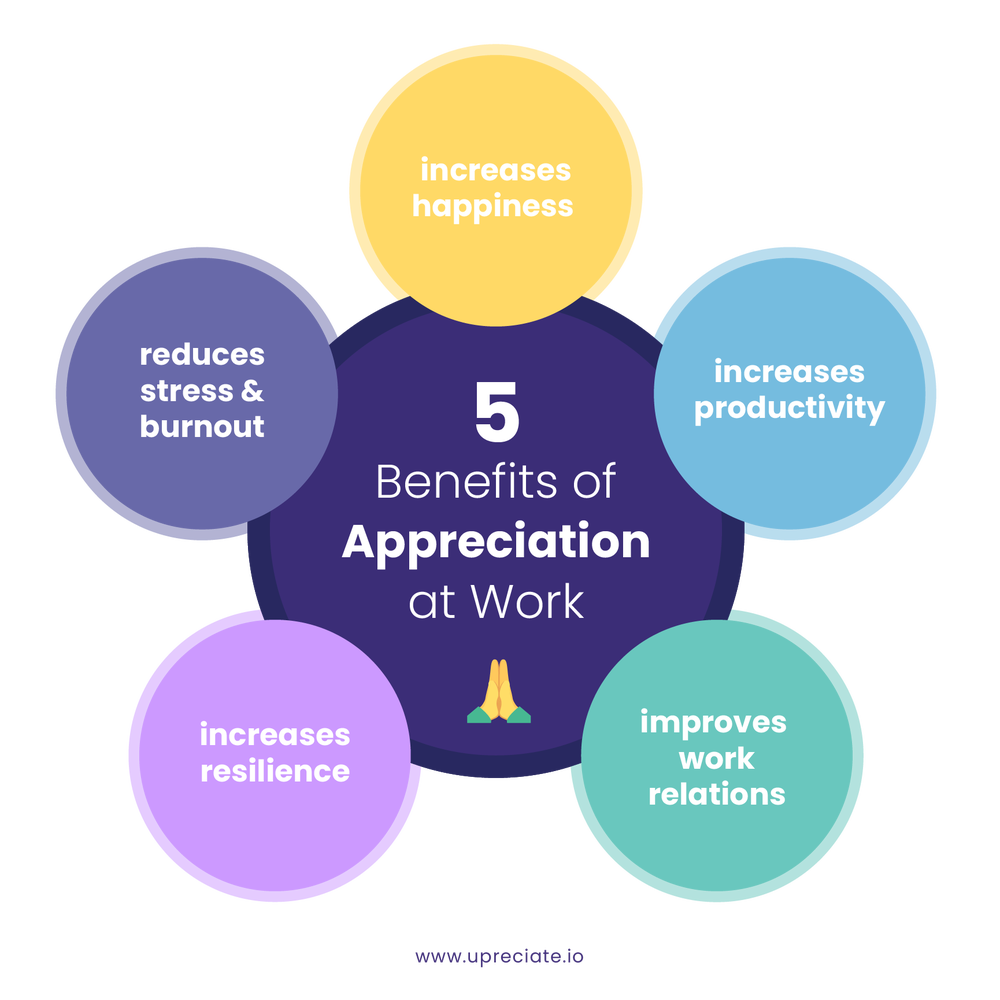Thank you is one of the most used expressions around the world, but half of the times we say these two words out of habit. Don’t be fooled, ‘Thank you’ is not just an ordinary phrase, it holds a great deal of power. It has the power to influence others’ behavior and to influence feelings in a positive way.
But for this expression to unleash its true potential, it must be meant with sincerity. Let’s face it, how often do you hear a meaningful thank you in the workplace?
Do you know what is the number one thing job seekers consider when looking for a job? It is “appreciation for their work”. As a manager or a co-worker, it might not be easy to remind yourself to express your genuine appreciation every day. Yet, a personalized thank you can really make a difference.
After the covid-19 pandemic, 2021 became the Year of “The Great Resignation” (also known as the Big Quit and the Great Reshuffle). According to PWC, the so called Great Resignation isn’t over, since they estimate that about 20% of workers globally are planning to quit in 2022. Can you guess why people are leaving their jobs? Because they don’t feel happy anymore, they are not getting the appreciation they think they deserve. Since April the turnover rate among companies has been alarming. This has compelled company leaders to revisit their employee recognition programs.
Do employees and managers say thank you enough?
Workers feel they aren’t given credit when it’s due and waiting a whole year for the annual performance review to hear a “Thank you for your great work!” six months later is not going to do it. Did you know that 63% of employees feel underappreciated by their current employer? That is a worrying figure, isn’t it?
Employees love words of affirmation. A stunning 75% of Americans agree that if their managers want happier employees they should say “Thank you” more often. As a leader, it is your responsibility to make sure that employees are getting the appreciation they deserve. Both employee appreciation and employee recognition go a long way together.
Employee appreciation and employee recognition are two different concepts. Employee recognition is the praise and positive feedback an employee receives after completing a job. Employee appreciation is instilling a feeling of acknowledgment among employees. It is an effort to make employees feel that their efforts are being valued.
To increase employee recognition and employee appreciation managers should provide regular feedback. However, there are several reasons why “Thank You” is not said enough in the workplace. Some managers don’t feel that employee recognition is important.
The bottom line is that workers are willing to leave their jobs if they don’t feel praised enough: almost 70% of the employees feel that managers saying thank you more often can boost their morale at work. This Reward Gateway study that surveyed employees and senior decision makers from the USA, UK and Australia, found a gap in employee recognition perception: they found that managers believed that organizations were providing timely recognition twice as much as their employees. This disparity in perception is critical to address. Think about it: you as a manager may think your employee recognition programs are working as they’re supposed to. But your employee’s perception might be slightly different and that’s worth digging into. And how do you solve this? Well, you need to provide the right tools that allow and stimulate a culture of continuous feedback and recognition (Employee Recognition platforms, like Upreciate).
One way to do that is by enquiring your employees straight forward whether they think they’re getting duly recognized by their work and if so, is that credit given timely?

The Benefits of saying Thank You
Thank you is a simple phrase, but it goes a long way. As a leader encouraging positive feedback among your teammates is crucial to successful business. When you are surrounded by individuals who excel in their respective fields which contribute towards your business goals, you must let them know that you appreciate their efforts. This is one of the many ways to show gratitude to your team members.
There are 5 benefits of employee appreciation and gratitude at work:
- Increases happiness
- Increases productivity
- Improves work relationships
- Increases resilience
- Reduces stress and burnout

A healthy, cooperative, and empathetic work environment is the result of a culture of gratitude. Gratitude instills the spirit of teamwork. When individuals work as a team they face all the issues head-on and collaborate more efficiently. Studies indicate that appreciation causes positive feelings and a more positive outlook towards life. Employees like the fact they are given importance and value in their jobs. Therefore, appreciation provides motivation and encouragement to employees. Both encouragement and motivation lead to job satisfaction. Job satisfaction drives better performance at work and decreases the turnover rate. Employees put their trust in the organization and their managers. Thus, we can conclude that employee appreciation and recognition lead to better employee engagement.
You must have heard the saying “happy wife happy life”, well we say, “happy employees, happy customers”.
Managers should set their priorities. Now are different times. Expectations of employees have changed. A mere bump in the salary alone doesn’t do the trick. For lower turnover rates and increased employee retention, nurturing a gratitude-filled environment has become a priority.
A small handwritten ‘thank you’ note, an email recognizing the efforts of the employee, or an appreciation speech in a meeting all can lead to a huge lift in employee engagement.
The impact of gratitude and appreciation at work
In his book “Thanks: How the New Science of Gratitude can make you happier”, Robert A . Emmons reveals a very important finding that science has proved the fact that exposure to the systematic cultivation of gratitude, makes people experience a variety of measurable benefits. These benefits can be psychological, physical, and interpersonal.
Therefore, when employees tend to work in an organization that fosters gratitude and appreciation, they become happier, more satisfied, and more motivated toward the achievement of organizational goals. The easiest, fastest, and most inexpensive way to increase an organization’s productivity is through gratitude and appreciation.
According to researchers at the Harvard Medical School, “Gratitude helps people feel more positive emotions, relish good experiences, improve their health, deal with adversity, and build strong relationships.”
Gratitude is contagious
Gratitude works as a magnet as it attracts:
- Positive Work Environment
- Positive Reinforcement
- Cooperation and Support
- Relaxed and Productive Atmosphere
- Compassion and Understanding
- Job Satisfaction
- Positive Mindset

You must have heard about the law of attraction. The basic concept behind the law of attraction is that our actions attract similar forces towards us as reactions. The same happens with gratitude. When we are in a grateful state, we are more likely to attract good things towards us. We tend to let go of bad things and moments easily. We focus more on the positive side of things. By staying calm, instead of piling up little pitfalls, we avoid them.
The way we react to and handle little things and small situation shapes our minds to how we are going to react to bigger and more complicated circumstances. Being grateful can thus put us into a positive state of mind. It prepares us to deal with complex situations in a smart and less problematic way.
No one wants to work near negativity. People tend to be more fascinated by people with positive vibes and mindsets. Peer-to-peer appreciation and peer-to-peer recognition at work tend to draw employees closer to each other. It strengthens the team-building spirit among employees.
“Scientists have revealed that visible acts of gratitude can lead to the snowball effect.”
After someone receives a praise, they feel so good that they understand it’s important for others to feel that way too, so they start being more aware and thanking more often. As a manager or a leader, you can generate this snowball effect among your team members as well. How? By fostering a culture of gratitude and thankfulness and for that you need to provide them ways to express their gratitude to their peers. And remember: a simple ‘Thank you’ works wonders 😉

